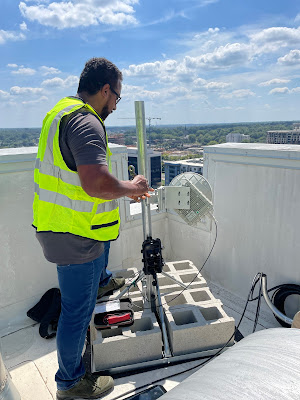Google Fiber is committed to supporting women in Science, Technology, Engineering, and Mathematics (STEM). As part of that commitment, we have supported the San Antonio Young Women's Leadership Academy Robotics program for the past several years with a grant that enables more young women at the academy to participate in the program. With the success of the program and the team winning their first competition this year, Ignacia Negrete Kilgore, YWLA CTE Departmental Chair shares the impact the program is making and how grateful she is for the sponsorships and partnerships that resulted in the success of the program so far.

Young Women’s Leadership Academy (YWLA) is a nonprofit STEM-focused organization in San Antonio, Texas. The entirety of what we do is dedicated to supporting young women by providing them with the necessary academic skills in STEM to achieve success in college — and it’s an organization I’m proud to be a part of. Right now, we serve over 500 female students, the majority of whom are Latina, live in low income households, and soon will become first generation college students.

But before we get into the heart of the work we do at YWLA, I want to tell you a bit about how I fit into all of this.
I started my engineering journey at Texas Tech University. I didn't know much about engineering at all — but I knew I wanted to learn. At first, it was very challenging, especially being one of the few women in the mechanical engineering program, and a Latina who was still learning English. I knew during my time there that I wanted to help change this feeling of “outsiderness” for future female engineers.
Soon after I graduated from Texas Tech, I was approached by a representative of YWLA with the opportunity to teach engineering to young women in their program. Just as I’d hoped, my doorway to make a difference in my field opened up. That was 8 years ago — and I’m still here, doing the work that I love by serving the future of women in STEM.
Shortly after I started teaching, I began envisioning where I wanted my engineering program to go. That’s when the transformation of San Antonio’s only all-girl FRC Robotics program came into play.
I got to work with my team and quickly added courses that would give our students certifications like AutoCAD, Inventor, and college credits for Computer Science, which led to the Robotics team qualifying for competitions. It was a big moment for our program and our students. But we had another massive hurdle to overcome -a stark lack of funding.
Simply put, though we began to qualify for state competitions, we couldn’t afford to attend them. This felt incredibly unfair to our hardworking students, so once again… we got to work.
I put together a sponsorship package and was grateful to connect with a local member of the GFiber team, who understood the importance of the program and knew it was the type of digital Inclusion and equity initiative that GFiber works to support.

That connection changed everything for us. Thanks to GFiber, we've been able to grow the program, provide better equipment, and not only qualify for competitions, but attend them (with multiple students)!
Last year, the program was able to pay for additional hotel rooms, food, and rent an additional vehicle to carry a total of 14 students (almost the entire team) to the competition. This was a game changer for our kids. Now, they could do the work and see their work in a competitive environment. This excitement from our students has radiated outwards. Our program is growing like never before and our graduates are ascending to new heights — attending prestigious engineering schools.
We've had students go to MIT, Brown University, Rice University, Texas A&M and the University of Texas at Austin, among others. In addition to getting into these competitive programs, the girls who participate in the robotics program are persisting through their rigorous engineering and stem degree programs to earn their degrees. The demands of the competitive robotic environment helps them build foundational skills for navigating these male-dominated spaces at the college level and beyond. This is the kind of impact that the YWLA Robotics program is making with the support of GFiber.
.JPG)
The achievements of our Robotics program would not be possible without a supportive team of people contributing to our success. We are truly blessed to have mentors and volunteers with great skills and experience. I am also thankful for my Head of School, Delia Montelongo, and my mentor and friend, Ashley Cash; these two inspiring women have taught me the skills needed to advocate for female STEM education and have always trusted and given me the freedom to go out there and find sponsors and partners like GFiber. It is amazing to see the growth and success that has come about due to all the support. I look forward to the continuous success of the Robotics program to educate and impact many more young girls, making great strides towards digital equity and inclusion.
Posted By Ignacia Kilgore, CTE Departmental Chair - San Antonio YWLA







.JPG)




.png)
.png)





